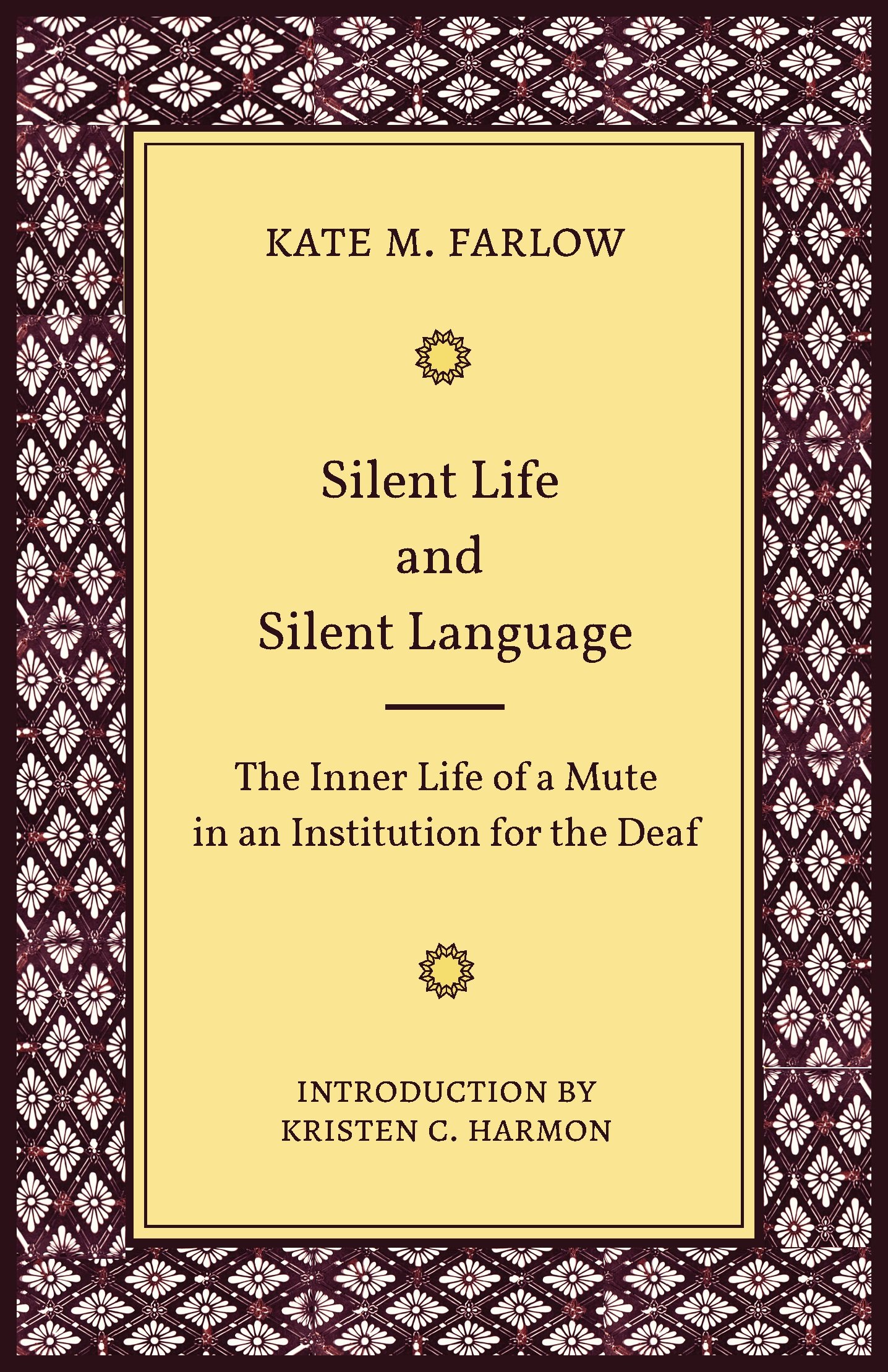Silent Life and Silent Language: The Inner Life of a Mute in an Institution for the Deaf

19th-Century American Deaf Writer
Introduction:
Kate M. Farlow was a teacher, writer, and active member of the deaf community in the 19th-century. The 19th century did not have high standards for the care and public representation of individuals with disabilities. There is one famous woman writer who was deaf and blind; Helen Keller. Keller was the first one to break out of the stereotype and published her writings and other works. Keller could not have been the first woman writer with a disability, nor is she the only one that should be well-known. Kate M. Farlow wrote, Silent Life and Silent Language; The Inner Life of a Mute in an Institution for the Deaf, in the late 1800s. The autobiographical novel is a collection of stories that Farlow accumulated throughout her life.
The Deaf in society
Kate M. Farlow was an activist of the deaf culture and taught sign language and history to its communities. The deaf communities were able to create a town where they could identify with others, share history, and marry between the deaf communities. In 1800, oralist wanted the deaf community to stop using sign language and have them learn to read lips and speak. The oralist thought sign language was unassimilated to Darwinism and a threat to society. Some of the deaf community rebelled against these principles. I believe that Farlow would have rebelled against these policies too.
Biography:
Kate M. Farlow was born on November 13, 1854, and died on April 18, 1909. Kate M. Farlow became deaf due to a childhood illness, which was believed from spinal meningitis. There’s nothing known about Farlow’s childhood, only that she attended Indianan School for the Deaf. Later she was taught at Iowa School of the Deaf. Farlow was a regular contributor to Ohio Chronicle in Ohio and The Silent Hooiser from Indianapolis, Indiana. Farlow published her writings, short stories, poetry, and news pieces. Miss Farlow traveled between Ohio, Michigan, Indiana, and Iowa states. Farlow was a devout Christian, which lead her to publish her book from the Christian Publishing House in Dayton, Ohio. Farlow is mentioned spartanly in the Wichita Daily Eagle in a Kansas newspaper about her involvement with the churches’ in the deaf community. Farlow never married, which was rare for any woman in her time period.
Farlow accomplished many great achievements as a writer and teacher in the deaf community. Farlow was single, deaf, and a woman in the time period when all odds were against her. Farlow did not let any of societal norms hold her back from the life she wanted. Farlow published many of her poetry and stories in local newspapers.
Summary of Silent Life and Language
Farlow wrote the autibiographical novel to reassure parents who had deaf children that they could live a happy life and receive higher education. Also, Farlow wanted to write a novel to show the public what life was like in the deaf institution.
The novel follows a young girl named Carrie Raymond who has become deaf from spinal meningitis. Ms. Raymond’s story spans eight years in an institution for the deaf and dumb. However, we only read a few highlights of the events within Carrie’s school career. The book explores the deaf institution’s everyday life of discovering language, culture, and friends.
Farlow’s Publication History:
Silent Life and Silent Language: Publication 1883, Publisher Christian Publishing House in Dayton, Ohio.
Poems:
“Prickless Gem” The Silent Hooiser Page 2 Indianapolis, Indiana.
http://ulib.iupuidigital.org/cdm/ref/collection/ISD/id/498.
“The Deaf- Past. Present, and Future” Ohio Chronicles Page 1, Columbus, Ohio
https://gaislandora.wrlc.org/islandora/object/ohiochron%3A998/datastream/PDF/view
Recovery Information:
This text has been introduced by Kristen C. Harmon from Gallaudet University, Washington D.C. in 2018.
Word Cited:
“1891-02-12 The Silent Hoosier.” Indiana School for the Deaf, Indiana Institution for the Education of the Deaf and Dumb (Indianapolis, Ind.), The Silent Hoosier. vol. 4, no. 9. pp. 2. 19 Mar. 2012.